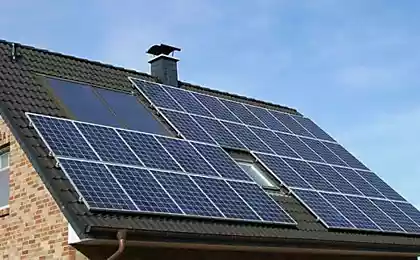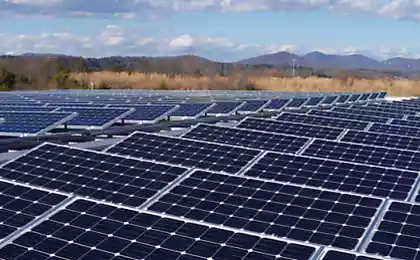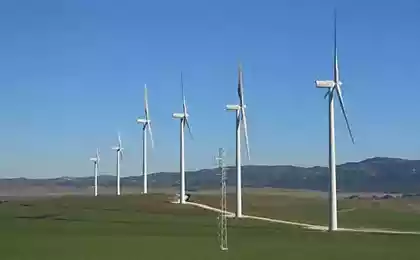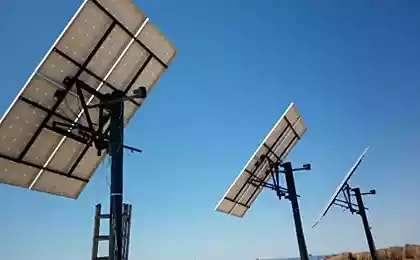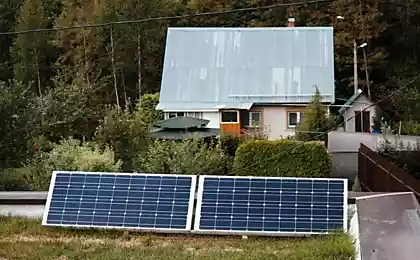1367
Calculation of the payback period of solar panels
By writing this article inspired clause in reportage from «MegaFon» of the base station with solar batteries. The reservation was that the payback period of the power system with solar panels - 2-3 years. I sort of activity engaged in installation and commissioning of systems and alternative energy sources, as I see it, The authors of articles on this subject underestimate the time during which the system is completely paid off, and in a few times. I>
Do not claim absolute accuracy, but the figures are not taken from the ceiling, and with a particular object, which made the installation of a brigade - Simferopol industrial-warehouse complex "myasko." In the calculations included the most expensive main article.
This plant has already had at the beginning of our work on the farm 300+ panels, assembled on a modular system. We added six more circuits on twenty panels. (Circuit - the union a certain amount of panels in one energy source, thus typed outline of the desired voltage for the inverter).
Dry calculations h4> Now, a little to the figures, all the calculations are carried out with the cost of shipping in the Crimea from German territory.
Panels. When ordering from the manufacturer (SolarWorld, Germany), one panel costs $ 350.
120 panels * 350 $ = 42.000 $
Fasteners. Usually worn on the tin roof used rails and designer - aluminum alloy bolts - stainless steel. In terms of one panel spent 3 meter rails, 10 bolts with gasket, 4 bolts with polubochonkom - 6.000 $.
Cable. Price per hundred-meter bay tends to $ 500. Assume that the panels located optimally close to the inverter in such a case, enough 200m (in this case took 350m). 1.000 $
Inverter - c converter input DC high voltage in the usual recess. Usually they are three-phase, in our case it was the firm inverter KACO Powador 30.0 TL3, the cost - 10.000 $.
Total:
Farm 120 panels costing 59,000 dollars. These calculations are not yet included wages designers, engineers and installers. In sum, all result in a budget that seeks to 65.000 $.
The actual power output h4> Theoretically, under ideal conditions, a panel must issue about 220-230Vt per hour (based on our usual 220 volts). Below are graphs which leads to the inverter control unit, monitor them remotely possible.
Do not claim absolute accuracy, but the figures are not taken from the ceiling, and with a particular object, which made the installation of a brigade - Simferopol industrial-warehouse complex "myasko." In the calculations included the most expensive main article.
This plant has already had at the beginning of our work on the farm 300+ panels, assembled on a modular system. We added six more circuits on twenty panels. (Circuit - the union a certain amount of panels in one energy source, thus typed outline of the desired voltage for the inverter).
Dry calculations h4> Now, a little to the figures, all the calculations are carried out with the cost of shipping in the Crimea from German territory.
Panels. When ordering from the manufacturer (SolarWorld, Germany), one panel costs $ 350. 120 panels * 350 $ = 42.000 $
Fasteners. Usually worn on the tin roof used rails and designer - aluminum alloy bolts - stainless steel. In terms of one panel spent 3 meter rails, 10 bolts with gasket, 4 bolts with polubochonkom - 6.000 $.
Cable. Price per hundred-meter bay tends to $ 500. Assume that the panels located optimally close to the inverter in such a case, enough 200m (in this case took 350m). 1.000 $
Inverter - c converter input DC high voltage in the usual recess. Usually they are three-phase, in our case it was the firm inverter KACO Powador 30.0 TL3, the cost - 10.000 $.
Total:
Farm 120 panels costing 59,000 dollars. These calculations are not yet included wages designers, engineers and installers. In sum, all result in a budget that seeks to 65.000 $.




